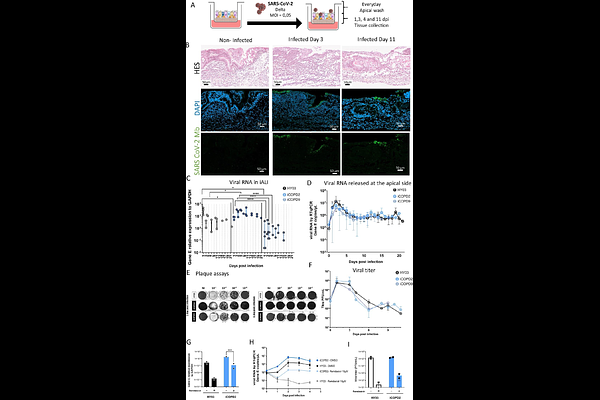Human pluripotent stem cell-derived bronchial airway organoids provide insights into differential innate immune and long-term responses to SARS-CoV-2 infection in healthy and COPD.

Human pluripotent stem cell-derived bronchial airway organoids provide insights into differential innate immune and long-term responses to SARS-CoV-2 infection in healthy and COPD.
Morichon, L.; SWAIN, J.; Gros, N.; Nasri, A.; Foisset, F.; Galisot, G.; Racine, V.; ASSOU, S.; Bourdin, A.; de Vos, J.; MURIAUX, D.
AbstractRespiratory infections are a major global health concern, as underscored by the COVID-19 pandemic. To better understand bronchial tissue responses to viral infection, we have developed a preclinical in vitro model mimicking the multiciliated airway epithelium, from induced pluripotent stem cell (iPSC) and cultured in an air-liquid interface (iALI). By using iPSCs reprogrammed from patients with chronic obstructive pulmonary disease (COPD), we successfully generated a fully differentiated and functional bronchial epithelium exhibiting key COPD features with goblet and basal cell hyperplasia and tissue inflammation. SARS-CoV-2 could infected and replicated for several weeks in both healthy and COPD models, with a recurrent peak at 3 days after infection. Infected iALI exhibited cilia destruction and increased mucus secretion. Innate immune response of different infected iALI reveals a differential expression of interferon-stimulated genes (ISGs) and pro-inflammatory cytokine secretion. Notably, COPD iALI displayed an earlier innate immune response to SARS-CoV-2 infection as compared to healthy iALI, suggesting a genetic susceptibility of COPD iALI towards inflammation induced by SARS-CoV-2 infection, and a less efficient response to antivirals. In conclusion, our study demonstrates that the iALI bronchial organoid model is a powerful tool for investigating bronchial tissue responses to long term respiratory viral infections, antivirals, and patients with COPD or other airway pathologies.